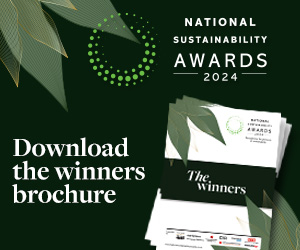A new report by the International Energy Agency (IEA) shows it could be possible to meet the goal of tripling global capacity for renewable energy by 2030 as agreed at COP28, but emerging and developing economies must brought along to achieve this.
Renewable capacity has increased by 50 per cent globally since 2022 and predicted to grow at its fastest rate in the next five years, with renewable electricity expanding more rapidly than at any other time in the last three decades.
Solar PV and wind accounted for 95 per cent of the expansion, with renewables overtaking coal and expected to become the largest source of global electricity generation by early 2025. The report found that the largest growth of renewable energy capacity happened in China which commissioned as much solar PV in 2023 as the entire world did in 2022.
The IEA report has also predicted that Solar PV and onshore wind deployment will more than double by 2028 in the US, the EU, India and Brazil. Prices of solar PV modules in 2023 declined by almost 50 per cent, with prices reductions set to continue. However, the report has found that the wind industry (outside of China) is facing more challenges due to ongoing supply chain disruption, higher costs and long permitting timelines. The report suggests that strong policy attention is required to support the wind industry.
Biofuels have also expanded in 2023 with emerging economies, led by Brazil and India, expected to drive 70 per cent of global demand over the next five years in uses in air travel and as replacements for highly polluting fuels such as diesel. However, the report found that though biofuel deployment is accelerating, it is not happening quickly enough, and a significant increase is required by 2030 for biofuels to play a part in reaching net-zero.
The IEA’s report describes a more realistic timeline for renewable-based hydrogen with only 7 per cent of projects announced worldwide expected to come online by 2030. The delay in investment decision as well as limited appetite from off-takers and high production costs have led to slower progress on projects compared to other renewables.
Executive Director of the IEA, Faith Birol said: “The new IEA report shows that under current policies and market conditions, global renewable capacity is already on course to increase by two-and-a-half times by 2030. It’s not enough yet to reach the COP28 goal of tripling renewables, but we’re moving closer – and governments have the tools needed to close the gap.”
The report indicates that the key to meeting these goals is to bring along advanced and emerging countries through addressing challenges such as policy uncertainty, insufficient investment in grid infrastructure and administrative barriers. If these issues can be resolved and emerging economies brought along, there could be a chance of tripling global capacity on renewable energy and meeting the goals set at COP28.
Latest News
-
Jewellers body offers grants of up to £50,000 to boost training
-
Agency overhauls community charity’s brand for free
-
Open University launches global majority voluntary sector leadership programme
-
OVO and Co-op’s foundations help launch youth climate justice funding scheme
-
Bus firm to invest £25m in green transport research
-
Myanmar earthquake: Co-operative bank launches emergency fundraising appeal
© 2019 Perspective Publishing Privacy & Cookies









Recent Stories